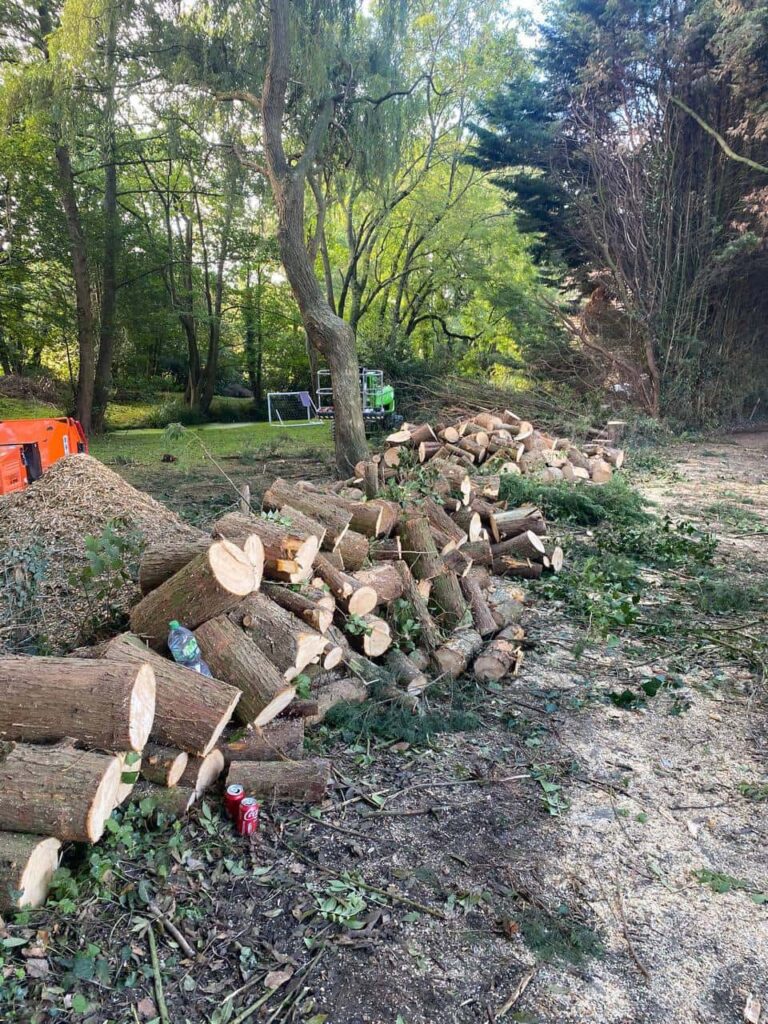How Improper Tree Cutting Leads to Long-Term Weakness
Introduction
Tree cutting might appear simple at first glance—just a matter of removing unwanted branches or reducing size. However, improper techniques or rushed decisions can leave a tree structurally unsound, vulnerable to disease, or even on the path to premature decline. Whether done by homeowners or inexperienced contractors, poor tree cutting causes damage that may not show immediately, but will almost certainly manifest over time.
At Letchworth Garden City Tree Surgeons, we’ve seen the effects of poor pruning and unsafe cuts on trees across Letchworth Garden City and the surrounding Hertfordshire area. In this article, we’ll explore how improper cutting practices weaken trees in the long term and what homeowners should look out for to protect their landscape investment.
The Difference Between Cutting and Pruning
Tree cutting is often misunderstood. There’s a major difference between professional pruning and aggressive, uncontrolled cutting. Pruning is a skilled practice aimed at shaping the tree, encouraging healthy growth, and removing weak or hazardous parts. Cutting, when done improperly, may serve short-term goals but result in long-term harm.
Common forms of improper cutting include:
- Over-pruning or topping
- Flush cuts that remove too much of the branch collar
- Random or uneven cuts that unbalance the canopy
- Cutting during the wrong season
- Using blunt or unclean tools
Each of these mistakes may look insignificant at the time but can have serious consequences down the line.
How Trees React to Poor Cutting Practices
1. Decay and Disease Entry Points
When a tree branch is cut incorrectly, especially too close to the trunk or without a clean edge, the tree cannot seal the wound properly. This open area becomes a prime entry point for pathogens, fungi, and decay.
- Flush cuts remove the tree’s natural protective barrier
- Ragged edges invite water retention and rot
- Internal decay may not be visible for years
At Letchworth Garden City Tree Surgeons, we use clean, angled cuts that support the tree’s natural healing process, helping to prevent future infection.
2. Unstable Growth and Weak Branches
Improper pruning can result in rapid but weak regrowth, particularly when topping or heavy lopping is carried out. The tree attempts to replace lost foliage quickly, often producing multiple fast-growing shoots known as “water sprouts.” These may look like healthy growth but are poorly attached and structurally unsound.
- Water sprouts are more prone to snapping in wind
- Increased canopy density without support
- Higher risk of breakage near pedestrian areas or buildings
Proper structural pruning avoids this issue by encouraging balanced and stable branch development.
3. Canopy Imbalance and Wind Vulnerability
Trees with uneven cutting patterns or removal of large sections from one side become top-heavy or lopsided. This not only affects their appearance but also their ability to withstand strong winds.
- Poor balance increases wind resistance
- Roots may weaken from compensating for instability
- Tree becomes a greater hazard during storms
Our team at Letchworth Garden City Tree Surgeons assesses overall form before any pruning, ensuring that any reductions maintain a strong, balanced structure.
Long-Term Structural Weakness
Incorrect cutting doesn’t just affect what’s visible on the surface. It can compromise the tree’s internal strength and root system. Over time, a tree under stress may divert energy away from healthy growth to repairing damage, leading to:
- Slower recovery from wounds
- Reduced nutrient transport
- Thinning of upper canopy or branch dieback
Eventually, the tree becomes more susceptible to external threats like drought, pest infestations, or additional storm damage.
Common Mistakes to Avoid
1. Topping the Tree
This is one of the most damaging actions taken by untrained individuals. Topping involves cutting the main trunk or large branches indiscriminately, leaving stubs or blunt ends. It leads to:
- Rapid, weak regrowth
- Disfigurement of natural shape
- Long-term vulnerability to decay
2. Cutting in the Wrong Season
Each species has a preferred pruning window. Cutting during active growing periods or extreme cold can disrupt the tree’s biological rhythm and increase stress.
- Spring cutting can reduce flowering and sap flow
- Winter cuts may lead to frost damage
- Autumn pruning can leave wounds exposed too long before healing
3. Using Blunt or Dirty Tools
Low-quality tools can tear instead of slice, and unclean blades may spread disease between trees.
- Jagged cuts increase healing time
- Infection risk rises with every cut
- Cross-contamination from diseased plant material
The Importance of Professional Tree Care
Professional tree surgeons understand how each species reacts to pruning, the best time to cut, and how to shape growth without undermining the tree’s long-term health. A professional approach considers not just immediate appearance, but also structural integrity and ecological balance.
With Letchworth Garden City Tree Surgeons, you benefit from:
- Targeted, species-specific pruning
- Safe and clean cutting methods
- Preservation of tree health and shape
- Responsible waste removal and site care
We help homeowners protect their trees and avoid the costly consequences of poor cutting.
Conclusion
A quick, careless cut may seem harmless, but over time it can lead to weakened branches, increased decay, and even the eventual loss of the tree. Improper cutting not only shortens the lifespan of your trees but can also create hazards and costly future problems.
At Letchworth Garden City Tree Surgeons, we combine expert knowledge with professional tools and techniques to ensure your trees remain healthy, stable, and beautiful. If you’re unsure about a pruning job or think past cuts may have caused damage, don’t wait—reach out to our team today for an assessment. Protect your landscape now and for the future with quality tree care that truly makes a difference.
Call us on: 01462 419 196
Click here to find out more about Letchworth Garden City Tree Surgeons
Click here to complete our contact form and see how we can help with your tree needs.

